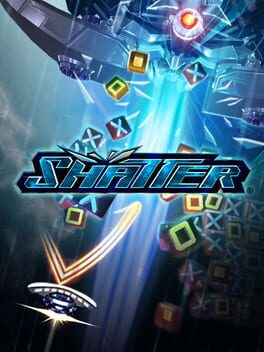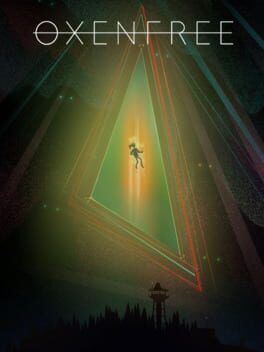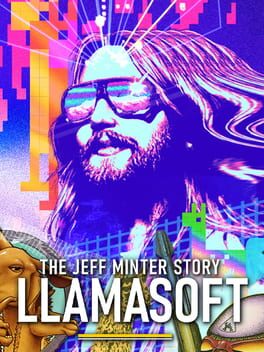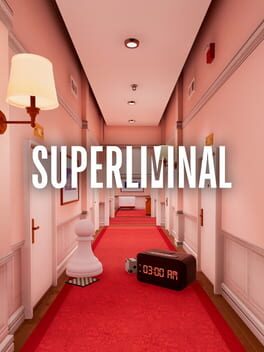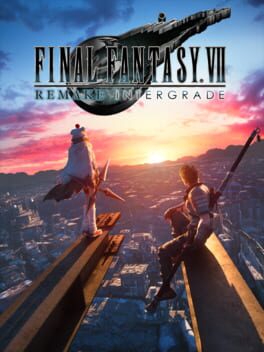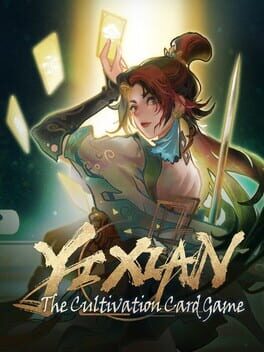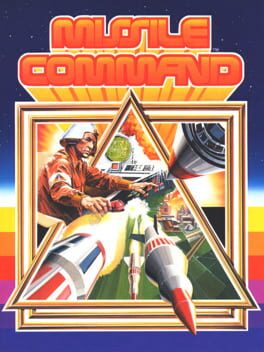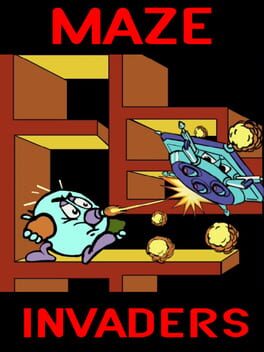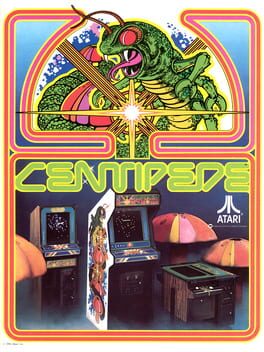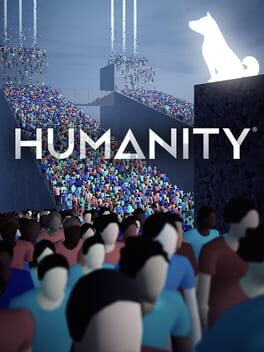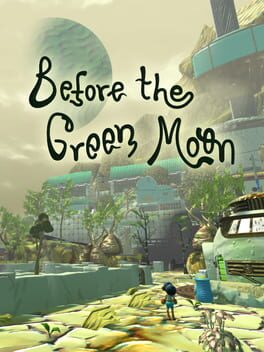done
2009
A brightly-lit, electro Breakout. It begins with good ideas and I enjoyed how boards encourage a mixture of classic paddle technique with the push-pull of its fans to change the arc of the ball. Unfortunately, it runs out of ideas in the middle. Two bosses are re-used with slight variations and there are few new obstacles, bricks, or board shapes in the last few levels. As a result, it seemed like the game increasingly relied on debris that knocks out the player's paddle over other challenges. I would have preferred that challenge come in the form of more interesting or complicated boards.
2016
I enjoyed Oxenfree's focus on plot, character, and dialog. Chatter between characters and the smooth implementation of interruptions and overlaps is rightfully lauded. The soup of paranormal and sci-fi that makes up the plot is intriguing enough, powered by unfolding relationship dynamics and inter-character drama. For all that it has polish and ambition, though, I came away feeling like Night School played it structurally safe. It's a little too consistent to be as interesting as it could be.
2013
Two qualities stand out in Anodyne: one, its designer's willingness to engage in symbolism and two, the quality of its mazes. Both can be hit-or-miss (hits: the red cave, apartments, and hotel; misses: the suburb, acrobats tent, endgame platforming), but I appreciate the use of 2D Zelda mechanics as a vehicle of authorial expression. There could be more connective tissue and context, but I enjoyed the open-ended, suggestive approach to story taken in most of the game. The mechanical complications of the final boss were fun and conveyed "final boss," but I found that it didn't do much to deepen the story. The ending was, somehow, just what I expected. I'm looking forward to what sounds like a more thoughtful and interesting game in the shape of its sequel.
A great collection and presentation of games, archival material, and interviews from and about Minter and Llamasoft. Digital Eclipse provided a lot of subtle improvements in this collection, like modern controls for 3D 3D, Psychedelia, and Colourspace. Minter is up front how his early games derived their gameplay from arcade hits, and how Llamasoft's early success was often made from adapting others' ideas to home computers like the Sinclair and Commodore. It's inspirational, in a way, to demonstrate how this approach provided a platform to become weirder and more experimental over the years until Llamasoft and Minter came into their own.
First, there are Camels instead of AT-ATs. Then, you play as the Camel. Then, maybe you're a kill droid protecting a family of Llamas and you are given control over what the wave structure of enemies will be. But all of that feels like prologue to me in comparison to Minter's true love of his light synthesizers. This collection ends right where today's recognizable Llamasoft begins, with Tempest 2000. There are references in some of the included video to later games like Space Giraffe, Tempest 4000, Moose Life, and Polybius, but they're not a direct part of... this part of the story. While I would have liked more of a mention of where Minter has gone since the 90s, I understand the focus of this collection and the story it tells. For that, Digital Eclipse continues their good work from Atari 50.
edit: I've put up a full-length review on Gamers with Glasses: https://www.gamerswithglasses.com/reviews/llamasoft-the-jeff-minter-story
First, there are Camels instead of AT-ATs. Then, you play as the Camel. Then, maybe you're a kill droid protecting a family of Llamas and you are given control over what the wave structure of enemies will be. But all of that feels like prologue to me in comparison to Minter's true love of his light synthesizers. This collection ends right where today's recognizable Llamasoft begins, with Tempest 2000. There are references in some of the included video to later games like Space Giraffe, Tempest 4000, Moose Life, and Polybius, but they're not a direct part of... this part of the story. While I would have liked more of a mention of where Minter has gone since the 90s, I understand the focus of this collection and the story it tells. For that, Digital Eclipse continues their good work from Atari 50.
edit: I've put up a full-length review on Gamers with Glasses: https://www.gamerswithglasses.com/reviews/llamasoft-the-jeff-minter-story
2019
A clever puzzle game that benefits from a central core idea in its presentation of dream logic. I think the most clever thing about it isn't its range of perspective puzzles or in its frame of a dive into layers of dreams gone wrong. Instead, it's in how few pieces there are in the scenario and how well, nonetheless, its designers explore the ideas of what is possible. The deployment of sets and facades, backstages and convention halls all contribute to the idea that this is a constructed dream, rather than one of limitless possibilities. It's funny, in a way, that this dream is so limited. Ultimately, I think this contributes to the message in its finale. Even seeing it coming, it's an affecting one made more resonant by Pillow Castle's presentation.
This is a rare thing: a 3D platformer that feels original. That isn't to say that it doesn't come with a bunch of influences, but the results are more than the sum of their parts. When Evening Star's ideas shine through, as in how complimentary the sound effects are to the soundtrack, or the abundant opportunities to rocket Penny forward and rapidly roll through levels, the game shines. Unfortunately, Evening Star hasn't quite figured out how to make failures fun, a problem exacerbated by glitches. I have a catalog of them after playing the game. It often felt like Penny and the levels tripped over themselves. Fortunately, the game would soon get back up, something charming would happen, and I would be back to enjoying myself.
edit: I've put up a full length review at Gamers with Glasses: https://www.gamerswithglasses.com/reviews/pennys-big-breakaway
edit: I've put up a full length review at Gamers with Glasses: https://www.gamerswithglasses.com/reviews/pennys-big-breakaway
Played a few years after finishing Remake, this was a good re-introduction to its style and mechanics. I enjoyed Yuffie and Sonon more as characters than I expected. It's a smart move to have them wander around Sector 7 in parallel to the main cast. Yuffie's urge to be a main character is a foil to Cloud, who is all anyone seems to want to talk about. The music is up to the standard of Remake, too, which means that it expands on the best soundtrack in current role playing games.
Clearly not for me. At least in the English translation, the writing is painful. I think that there might be something to the combination of mechanics and the character roster made me a little curious, but not enough to muddle through the game's text. Unfortunately, the poor writing isn't limited to character dialog and extends to the description of the game's mechanics. If you're looking for a deckbuilding autobattler, I'd recommend picking up something else.
1980
A brilliant piece of Cold War media. Yes, I mean that. Contextualized in the Atari 50 collection, the blurb that reads that designer Dave Theurer was inspired by nightmares of nuclear annihilation comes through loud and clear. Or maybe Theurer had nightmares as a result of designing and programming this one. Either way, Missile Command puts players in a no-win situation. Missiles rain down and players might choose the awful logic of protecting a few cities and their arsenal of missiles over having a full slate of cities. Setting a high score and earning an extra credit is easily doable after a few rounds, but avoiding the flashing light of "THE END"? Not so much.
1979
As with a lot of these older Atari titles, I found myself wondering about the mystery of Asteroids' appeal. The game is fascinating in its simplicity. My mind wanders during play after play. How is it that I have to stop myself from reading intentionality into the random patterns and velocities of asteroids as they break? How is it that shots from large (and even worse, small) UFOs seem to be directed at the spike that represents my spaceship? How is it that, simply by calling the game "Asteroids," I read that shape as a spaceship and the mushroom-like shapes as, well, Asteroids? And why is it so difficult for me to routinely crack 10,000 points?
2023
The style of the game is crisp and I found the multiple skins to each be readable. It's well-suited to mobile, too, and maybe part of the satisfaction is the tactility of it. There's a mixture of rumble, sound effects, and visual pops that is absorbing and satisfying. The feeling is almost like moving a rubik's cube around, but with more videogame flash.
I enjoyed the crunch of the blocks and the additional complication of new block types while progressing through finity. While I considered abandoning it around one of the higher tiers, all I needed to do was wrap my head around combos and to let go of worries about blocks that were locked out of moves. The higher priority blocks to deal with come in pairs or must be broken open. After realizing that, it was easy to hit the finish line at platinum rank.
I enjoyed the crunch of the blocks and the additional complication of new block types while progressing through finity. While I considered abandoning it around one of the higher tiers, all I needed to do was wrap my head around combos and to let go of worries about blocks that were locked out of moves. The higher priority blocks to deal with come in pairs or must be broken open. After realizing that, it was easy to hit the finish line at platinum rank.
1981
It's easy to see why this remained a playable prototype. It plays like a series of ideas on a chalkboard under the heading "what if we changed... this?.. from Pac-Man?". None of the resulting ideas manifested in a better or more interesting game.
In place of fixed boards and channels, walls move or can be flipped around. There's some enemy variety, including some with bullets, and the player character can also shoot. Movement is relatively free, although I often found myself waiting for gaps to open up in the moving walls that I just mentioned. The only interesting ideas that I found were the somewhat order of levels, based on exit doors, and the option to restart from the last board played before death.
I played until I could easily top the default leaderboard and I think I get the idea. On to the next one in Atari 50.
In place of fixed boards and channels, walls move or can be flipped around. There's some enemy variety, including some with bullets, and the player character can also shoot. Movement is relatively free, although I often found myself waiting for gaps to open up in the moving walls that I just mentioned. The only interesting ideas that I found were the somewhat order of levels, based on exit doors, and the option to restart from the last board played before death.
I played until I could easily top the default leaderboard and I think I get the idea. On to the next one in Atari 50.
1981
I'm not sure how many times I've played Centipede, but in the last couple months I've been playing it again in the Atari 50 package. I wanted to at least get back to where I was regularly hitting another credit and topping the default leaderboard. It's kinda nice to once again be confident that I could put my initials up on a machine that gets restarted every night.
Centipede is an excellent early arcade game. I think that some of the ways that it uses randomness are probably still textbook today, or at least they should be. The way the board becomes increasingly dense in interactions between the player and the centipedes is a good way for complexity to emerge. The fun, as I see it, is in managing that complexity for as long as possible. The additional obstacles of jumping spiders and dive-bombing beetles that further gum up the works also require more on-the-fly adjustments.
It's a well-designed game that's just tricky enough to reward repeated attempts as players get to grips with the strategy of it. I can't see myself wanting to truly master it, but I understand how it could get its hooks in.
Centipede is an excellent early arcade game. I think that some of the ways that it uses randomness are probably still textbook today, or at least they should be. The way the board becomes increasingly dense in interactions between the player and the centipedes is a good way for complexity to emerge. The fun, as I see it, is in managing that complexity for as long as possible. The additional obstacles of jumping spiders and dive-bombing beetles that further gum up the works also require more on-the-fly adjustments.
It's a well-designed game that's just tricky enough to reward repeated attempts as players get to grips with the strategy of it. I can't see myself wanting to truly master it, but I understand how it could get its hooks in.
2023
It's possible to look at a level of Humanity for ages. The visual concept of bipedal figures swarming or moving like schools of fish remains striking throughout the game's transformations. The soundtrack is also pleasantly abstract, which works well at both regular speed and fast-forward. That's a good thing, as the major downside to the game can be how much it relies on trial-and-error and restarts. However, the variety of levels and challenges ensures that issue doesn't dominate the game. Some levels are genuine brain-twisters and the boss fights (yep, it's a puzzle game with boss fights!) are always a spectacle.
Before the Green Moon is a beautiful game. Relationships unfold slowly and gently, but the pace of the game around the busywork of farming and gathering provides structure. For a large chunk of the game's time (which, for me, lasted about 9 or 10 hours), it seemed like there was at least one new encounter or discovery each day. The ending also provided me with a feeling of nervous excitement that I get before a big trip. Few games are this emotionally engaging.
